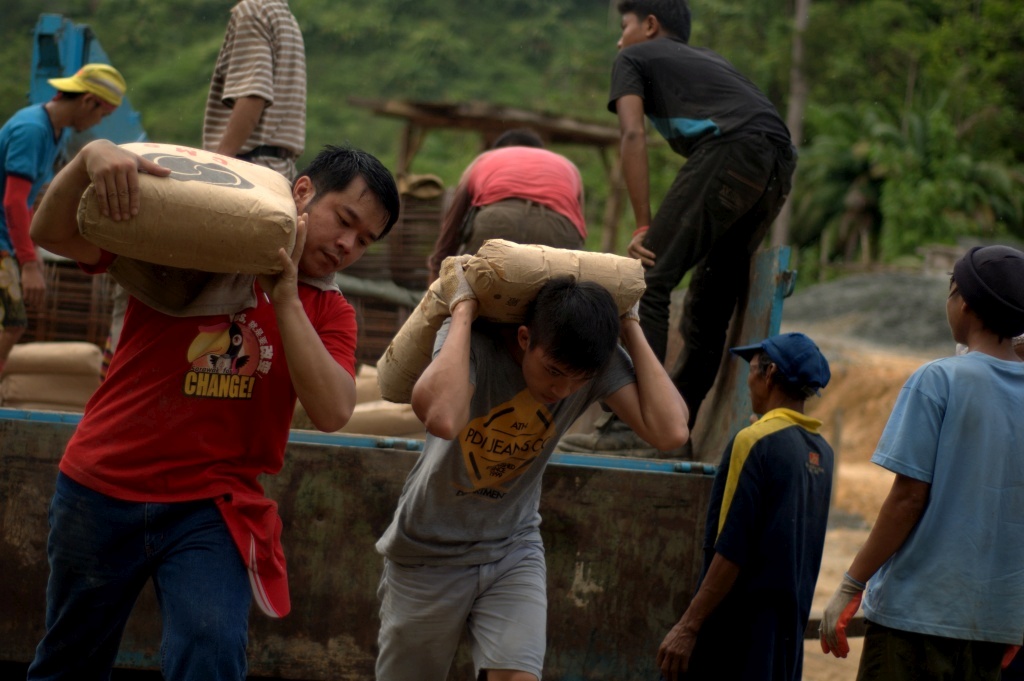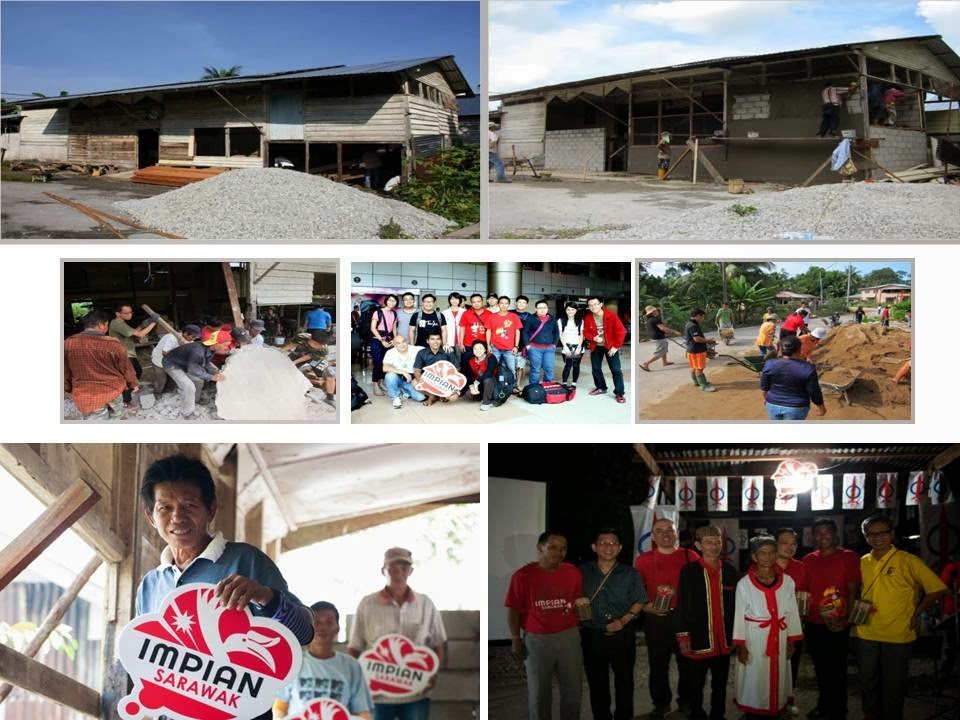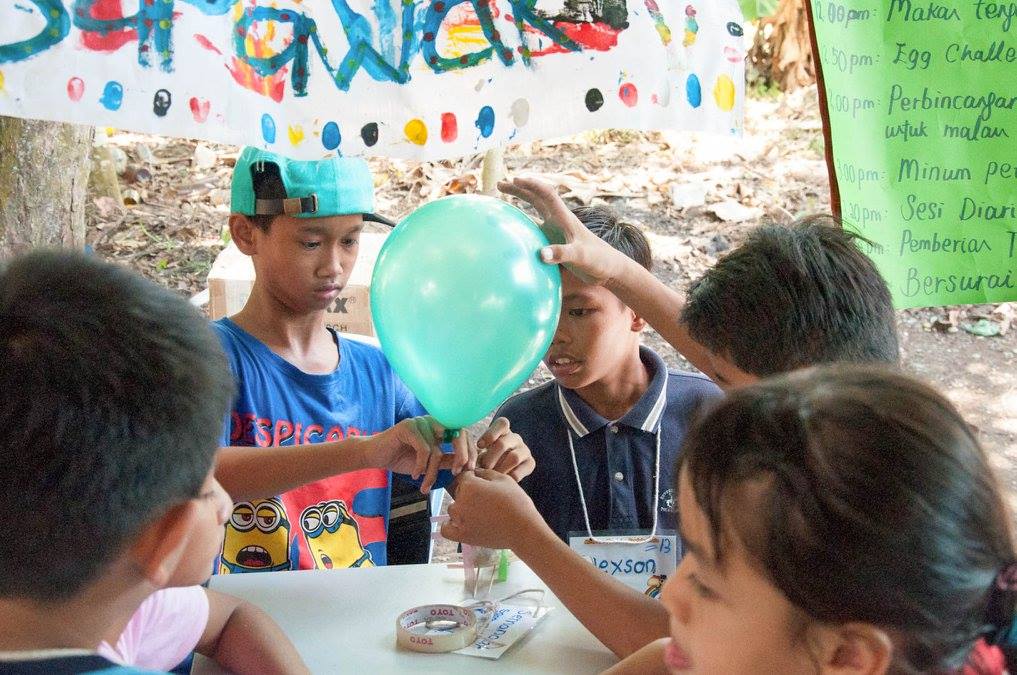
When Lim Kit Siang initiated Impian Sarawak in 2013, there was one goal in mind. That goal was to provide basic infrastructure – roads, water and electricity to the people of Sarawak, especially those in who lived in rural areas and was denied access to these everyday amenities.
After decades of failures and broken promises from Sarawak’s state government, DAP set out to prove that change is possible, if there is the will to change.
Along with help from the community, volunteers, and some fundraising efforts – DAP carried out various projects to uplift the well-being of the poor villagers in Sarawak.
1. Gravity fed water system

One of the first projects that was carried out by Impian Sarawak was providing clean water to Kampung Sait with a Gravity Feed Water System.
This system uses the laws of gravity to move water from point A to point B. There are no pumps or electricity required for this system.
The issue of needing a proper water system started when the villagers of Kampung Sait was asked to shift to a higher ground to give way to the construction of Bengoh Dam, which will serve as a water reservoir to the town, sending water to the taps in town when needed.
Ironically, the construction of Bengoh Dam actually deprived the villagers of Kampung Sait of a water supply. The costs of building the Bengoh Dam was about RM 60 million and a gravity water feed system that will make running water possible for every household in Kampung Sait only cost about RM25,000
These villagers were cheated by the government, who promised to provide them with basic amenities such as a roads if they agree to the construction of the Bengoh Dam.
Before the construction of the new water gravity feed system, the villagers were actually forced to walk 2 kilometres every time they wanted to fetch a pail of water!
2. The road to Kampung Kiding

A 3km uphill hike to and from their village homes daily – such had been the backbreaking routine for villagers of Kampung Kiding, located in the interiors of the Mambong constituency, just under two hours from Kuching town.
As a farming community, the villagers earned a living by hauling their agricultural produce to sell in town. For the young children living in this village, they also had to trek the same way to and from school; a distance that usually takes over an hour.
The ‘luckier’ children who had beds to sleep in at the hostel only needed to make that trek on weekends when they returned, but the less fortunate ones had to navigate the steep jungle path every day. This daily drill was not just punishing for those little limbs, but a taxing toll too for the older folks, especially under unrelenting heat! The villagers’ repeated requests to the government for a road had been ignored, with the excuse that the projected cost would amount to some RM10mil.
Determined to make lives better for these people, and unconvinced by the government’s quotation, Impian Sarawak undertook the uphill task of building its first ever road project at this site. In May 2014, the upgrading works began, continuing for two solid months that crystallised into a 4WD road where villagers could ride on motorbikes or other vehicles to deliver goods and send their children to school. This 3km route was also fitted with two connecting bridges and seven culverts.
Costing just RM140,000, a fraction of the government’s far-fetched and preposterous figure, this completed project has benefited not just Kg Kiding but its neighbouring village Kg Kakas, which consists of 80 families in total.
Over the course of the two months, the gotong-royong spirit was high and unwavering, with tasks and responsibilities shared between the villagers and some 53 volunteers from different parts of Malaysia, who flew to Kuching on their own expenses. The Impian team took turns toiling on the ground and successfully overcame all odds and challenges faced, despite having to navigate new unchartered waters of road-building, from logistical arrangements to convincing and readying the community for the project.
3. Restoration of Rumah Gawai in Kampung Serikin

Twelve volunteers from all over Malaysia came together to embark on the refurbishment of a dilapidated Rumah Gawai in Kampung Serikin, near Bau.
Rumah Gawai is an important feature in the community as it is the central point of the celebration of Gawai Dayak, to as many as over 1000 community members from up to four villages in the area.
The original structure had not been renovated on for more than three decades since it was first built. Its dilapidated condition had resulted in it not being used for several years and the people of Kampung Serikin not having a communal hall where they could bond with the other villages.
As it was an extremely important part of Dayak culture, over 200 families has benefitted from this project as the house is used for celebrations and events in the four villages.
4. Jetty construction in Rasau

Kampung Sg Rasau jetty works marked the first riverine infrastructural project carried out by Impian Sarawak, along the Batang Igan River in Sibu.
Under this community project, two constructions were completed at the same time. The first is the upgrading of a dilapidated jetty and repainting of wharf at Rumah Juan (28 pintu), while the second involved the rebuilding of a new jetty from a previously makeshift one at Rumah Pasang (32 pintu).
Both rumah panjangs, also called longhouses, are located just five minutes apart from each other.
As this is a riverine community, villagers who live here rely heavily on their jetties to get access to boats as well as load/unload their goods from them. They plant their own vegetables and paddies in their land across the mighty Batang Igan River, where they have to travel via boat to and fro every day.
The entire community in this area consists of 9 longhouses and are severely fractionated due to political differences. Some were allocated with funds to build their own jetties and can only be used by supporters of that political party while some unfortunate longhouses like folks in Rumah Pasang have to make do with leftover planks that function as their jetty but which is unsafe to walk on, let alone transporting their goods to and fro their longhouse. Meanwhile, at Rumah Juan, their jetty would be inundated by flood waters during the rainy season in December.
The projects were carried out gotong-royong style among the villagers together with 7 Impian volunteers from all across Malaysia.
5. Children’s activity and Education Camps

The camps are to instill a love for learning and allow the children to express their creativity and further their curiosity. These education camps focused on reading and writing, along with Science and Mathematics
The camp would host activities like story-telling, colouring and reading as well as cultural nights.
Perhaps of all the activities the children enjoyed, the science session was their favourite.

They were allowed to carry out simple experimentations like the lava lamp, the neutralisation process using vinegar, soda bicarbonate and a balloon, the float and sink experiment, observation of insects and the skeleton song for body parts kept the students engrossed for hours.
It was truly heartwarming to see even some of the adult parents request to join in as they to wanted to learn and join in on the activities.
In addition to education camps, Impian Sarawak also conducted various other programs to enrich the lives of Sarawakians including Health Camps, Micro-Hydro community workshops, and mini-workshops with a host of activities for kids and adults.



